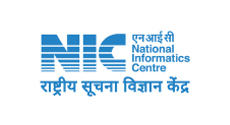Rice (Oryza sativa) is one of the important crops cultivated and consumed throughout the world. About 90% of rice grown in the world is produced and consumed in Asian region. Though, many high yielding varieties of rice are available, the yield potential of these varieties is considerably affected by various biotic and abiotic stresses. Among the various biotic stresses, like bacterial leaf blight, sheath blight and stem borer limiting rice productivity, rice blast caused by Magnaporthe oryzae (Pyricularia oryzae) is a serious constraint in rice production at global level. Blast pathogen infects the crop in all stages of its growth, starting from nursery to grain filling stage, under favourable environmental conditions. One of the important methods of management of this disease is to develop rice blast resistant varieties. At NRCPB we identified, mapped and cloned a dominant blast resistance gene Pi54 which provides resistance to several isolates of M. oryzae (Fig.1). Using marker assisted selection, NRCPB along with Division of Genetics, IARI and Department of Agricultural Biotechnology, HPKV Palampur has transferred blast resistant gene in BPT 5204 (Fig. 2) and in Pusa Basmati-1 (Fig.3), respectively. These lines were evaluated at different locations in India for their agronomic performance and for stable blast resistance. Some of these lines have already been nominated for AVT under All India Coordinated Rice Improvement programme. The Pi54 gene is being transferred in many rice varieties by different institutes in India using MAS.
- Skip to main content
- Screen Reader
- Hindi
- A A A
- Color







